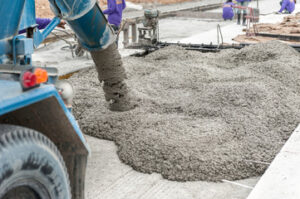If your concrete has deteriorated, you may need to contact a professional from Concrete Repair. These experts can help you choose the right repair solution for your needs. Here are some tips to make the process easier for you. You can get a quote right away, too! Here are the benefits of hiring a professional concrete repair service. Moreover, you’ll know exactly what you’re getting into before you begin. The quality of the finished product will be assured.

First, prepare the area to be repaired. Remove crumbling areas. If they’re small, use a heavy-duty trowel. If the area is large, use a sled and cold chisel to remove it. Once you’ve removed crumbling areas, clean the area thoroughly. Hose down any loose areas to prepare for the repair process. Then, apply a layer of repair material. After this, allow it to dry for two to three hours.
In addition to proper substrate preparation, you should consider the timeframe and shipping requirements of the repair. Some repair materials can achieve high strengths early, which decreases their service life. Moreover, they contain ingredients that cause shrinkage cracking and make them more brittle than concrete. Therefore, you should always carefully evaluate the repair material and procedure before choosing it. Once you’ve assessed the repair needs, you can choose the right product for your job.
The first step in the concrete repair process is to assess the extent of the problem. Cracks and unevenness are the signs of damage. This type of damage is usually more affordable than replacement. You can also consider having the concrete slab scanned by a professional to detect any problems that may be affecting the structure. They’ll evaluate the severity of the problem and recommend the best approach for repairing concrete. If you’re not able to afford this step, you can contact a concrete repair service and ask them to fix it.
After you’ve assessed the depth of the damage, you should prepare the area for the repair. Make sure the area that needs repair has been sound, otherwise, you’ll need to replace the slab. For this, you’ll need to make sure that the cut is made to a depth of 1/2 inch or more. A saw cut along the face of the joint is necessary to remove old joint sealant and make a clean vertical face. After this, you need to clean the cavity with compressed air or high-pressure water jets.
After cleaning the area, it’s time to fill the cracks with cement. A quick-setting cement mix is the best choice for wide cracks because it mixes with water to form a stiff clay-like putty. You can also apply an acrylic fortifier to the concrete. You can also use epoxy to fill cracks that are deeper than 1/4 inch. Then, you’ll need to level the surface. If the cement cures too quickly, you’ll need to repair the crack again.
Corrosion: Another common problem of concrete is corrosion. When harmful materials penetrate through the concrete, they reach the steel reinforcement and start corroding it. An electrochemical reaction releases ferrous ions at the anode and hydroxide ions at the cathode. The rust is heavier than steel and causes internal pressure on the concrete. If the concrete repair has a crack, more harmful materials will penetrate the concrete and cause further damage.
A few of the most common solutions for concrete repairs include the use of a standard concrete mix or a special sand mix. These materials can be mixed with water to create a thicker patch and can be applied to the concrete surface to fill deep depressions. For larger repairs, use a concrete patch. When applied properly, it will blend with the existing concrete. You can use either method to fix the problem. It is important to consider the method that best suits your needs.
Chemical factors: There are three categories of chemical damage to concrete: physical, chemical, and biological. Chemical damage can be caused by heat, changes in temperature, moisture, and wind. Physical factors can also lead to damage. These include abrasion, erosion, cavitation, and corrosion of reinforcing steel. Chemicals also include acids and the leaching of salts from the soil. A chemical repair specialist can help you repair concrete that’s damaged due to a combination of different factors.